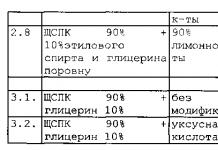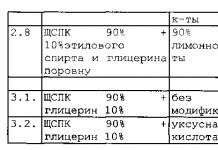Constantly rising energy prices, government threats to introduce restrictions on energy consumption per person, the insufficient capacity of the Soviet legacy in the field of energy and many other reasons make us think about saving. But which way to go? How is it like in Europe to walk around the house in a down jacket and with a flashlight?
There are many other ways that will not limit comfort or cause inconvenience. We will not allow them to charge us even more money (for connecting additional power to the house). Let's go through the main criteria for energy consumption (both thermal and electrical) and see how you can save resource consumption by using energy-saving devices.
Heating and hot water supply
Heating water, as well as heating the room (especially in winter) is the most energy-intensive consumption criterion. It would seem how you can save money here, because no one has ever managed to break the laws of physics, and any energy sooner or later turns into heat. You can improve the thermal insulation (which, of course, is worth doing) or lower the temperature (so there will be less heat loss), but what if there is nowhere to improve and you don’t want to huddle under a blanket, freezing?
There are several real ways to save a lot.
Tricky option
Recently in England they invented the simplest, but nevertheless effective energy-saving devices. The principle of their operation is elementary - it turns off the heating for 20 minutes several times a day. According to research, no one in the household notices or freezes in such a short time, and after turning on the temperature returns to normal. Naturally, using such a device, you receive less heat, but you will also pay the same amount less.
Of course, this method will only be effective if there are meters for the heat received, otherwise its use is pointless. And using an energy-saving device, the price of which depends on your requirements and starts from 300 rubles, in the northern regions you are unlikely to be able to avoid inconvenience. Moreover, this is a kind of compromise, and not a radical way to solve the problem.
Heating with heat pumps

No one is surprised by air conditioning anymore. In summer it gives such a welcome coolness. But where does the heat removed by them go? That's right - outside, so special radiators with fans are placed there. What does this have to do with heating, since the problem is completely the opposite? It's simple. An air conditioner is a heat pump. Where does the heat come from if (when heating with electricity) 100% of the energy in any case goes into it, and, for example, 150% cannot be in principle? Let's take it from the street, using other energy-saving devices - heat pumps. Or from underground. In the ground (at shallow depths), winter and summer have the same temperature - about +5 degrees. If you bury a sufficient amount of pipe to the required depth and fill it with coolant, then a large amount of heat can be pumped out of the ground. In Germany, this method has already gained quite a lot of popularity among owners of private houses.
The heat pump is the so-called air conditioner in reverse. It happens that more modern technologies are used - Peltier elements. They exclude a sealed system with expensive compressed gas; they are much more compact, but still very expensive.
Savings from a heat pump
The savings obtained with this heating method (which, by the way, no one bothers to use for hot water supply) is 1 to 3. Having spent 1 kW of electricity, we pump 2 kW of heat into the room and the same 1 kW spent on the operation of the thermal pump will also be indoors. In total, by spending 1 kW, we get 3 kW. Considering the high cost, it will not pay off immediately, but such a system is installed for many years, and over time the savings will be substantial.
The method described above is applicable for your own home. Is it possible to do something similar for an apartment, because no one will allow you to bury pipes in the yard just like that, but you would like to use energy-saving devices?

There is another way. True, it is suitable for not very cold climate zones. It’s just that ordinary air, which is blown by the wind outside the window, is used as a coolant. But its effect will be (using the air conditioning principle) only at temperatures outside the window above -7 degrees. Or you will have to use expensive Peltier elements, which can afford a slightly larger temperature difference.
True, there is a drawback with the “air” method. small enough that it needs to be pumped through a radiator, a fan is required. And the presence of a fan means noise; the neighbors may be against it. On the other hand, they use air conditioners with a similar device...
Lighting
There is room for savings in lighting. Especially if it uses energy-saving home appliances such as typical incandescent light bulbs. Here, no violations of the laws of nature are required. It's just that an incandescent lamp has about 10%. That is, the lamp, consuming 100%, shines 10%, and the remaining 90% goes into heat, which means nowhere. But you still have to pay for it. But there are many types of much more economical devices. Let's talk about some of them.
Fluorescent lamps
Since ancient times, in factories and offices, to save on lighting, many static energy-saving devices have been used, such as fluorescent lamps, which are usually long luminous tubes.

This type of lamp allows you to save according to two criteria - energy and the cost of replacing the devices themselves. Electrical efficiency is quite impressive - they are three times more energy efficient than incandescent lamps. Such a product shines like a 100 W incandescent lamp, but consumes approximately 30 W of electricity. In addition, they are much more durable. If an incandescent lamp lasts about 1000 hours, then a fluorescent lamp lasts about 8000 hours.
But they also have significant drawbacks. Reviews about energy-saving devices of this type are contradictory. Firstly, they contain mercury, which means you cannot break them and simply throw them in the trash. Used lamps must be taken to specialized places. Secondly, they do not glow with an even, constant light; they blink very often (at a network frequency of 50 times per second), which can affect vision. Thirdly, they require special lamps for their work, which cannot boast of a variety of designs. It will not be easy to choose a lamp for such a lamp so that it fits into the interior.
Compact fluorescent lamps

This is a development of traditional fluorescent lamps. The electronics that control their operation are contained directly in the base. The base itself became similar to incandescent lamps. Additionally, the glass bulb is thinner and curled to take up less space. And the electronic unit, built, let us remind you, into the lamp itself, eliminates noticeable blinking of the lamp. Now flashes occur 30-40 thousand times per second, which is completely invisible to the eye. The energy consumption and durability characteristics have remained virtually unchanged, therefore, these are still the same popular energy-saving devices for the home as before.
But the problem of recycling has not gone away. They still contain mercury, they cannot be broken and must be taken to special points. Which in many ways, apart from some danger, determines the inconvenience of use.
LED lightening
Today, perhaps the most effective thing anyone can do with their own hands is a device that provides LED lighting. The efficiency of such lamps is close to 100% - illumination similar to 100 W in an incandescent lamp is provided by a 7 W LED lamp. They are very compact. As a rule, they are used to make strips or assemble lamps (including spotlights). There are a wide variety of designs for both lamps and luminaires based on LEDs. For a designer, there is absolute freedom here - the presence of both standard devices and an unimaginable number of rare types of products frees up his hands.
Very high durability (more than 25 thousand hours of continuous operation - almost three years) allows them to be made non-removable. They do not have the disadvantages of fluorescent lamps - they burn constantly without blinking. They do not contain mercury. They do not require a special lamp (except for designer delights), they are much more compact than any other types of lamps. In addition, they come in any glow color, thanks to which you can not only switch the brightness of the light, but also the color (cooler tones are suitable for work, and warmer ones for relaxation).
Their main drawback today is cost. But due to mass production and market saturation, it seems that the price will drop significantly in the near future.
Designs based on natural light

In distant, warm but poor countries, where most people have only heard about electricity, there are ways to illuminate rooms without any electrical energy at all. Natural street light is used. There is also nothing stopping us from using it if the room needs to be illuminated only during the daytime.
Like everything ingenious, this method is the simplest. A light-conducting and light-scattering device is mounted in the ceiling and roof of the room. In the case of poor countries, this is an ordinary bottle. We can use a special design with an aesthetic appearance.
Among the advantages of this method, there are two main ones - the absolute absence of electricity consumption and endless durability.
But the disadvantages are no less significant - this option can only be used if there is fresh air above the ceiling of the room, and not neighbors. And when the sun doesn’t shine, it’s also of no use.
Appliances
Various household appliances account for a significant share of energy consumption. By choosing the right one, you can also significantly reduce the use of a single home. For example, the Energy Saver energy-saving device allows you to significantly save energy consumption. In this case, you just need to plug it into an outlet.

If you have an old TV with a very voluminous (by modern standards) body, there is a good reason to update it, since a modern flat device will not only show better, but also consume significantly less. Also, a laptop instead of a desktop computer will save hundreds of watts of consumption. In addition, there is an opportunity to save a lot of money by purchasing an energy-saving device “Economych”. Various kitchen appliances (refrigerators, dishwashers, multicookers, etc.), and household appliances in general (washing machine, vacuum cleaner, etc.) must be purchased with energy consumption class “A” or, even better, “A+” . This approach can add many more kilowatt-hours saved.
Conclusion
We only considered devices that consume energy. But there are also those that produce it - solar panels, wind generators, etc. There is also a Power Saver - an energy-saving device that can significantly reduce energy consumption in an apartment. If you combine both approaches, then it is quite possible to completely disconnect from external (paid) energy sources, which will give high autonomy (no one will turn off the lights, etc.) and unprecedented savings. But this is beyond the scope of this review.
These are energy-saving devices that allow any electricity consumer to save from 15% to 45% of monthly electricity costs.
Order!
Additional Information
For the rational use of electricity, it is necessary to provide cost-effective ways of transmitting, distributing and consuming it with minimal losses. To do this, it is necessary to exclude from electrical networks all factors leading to losses. One of them is the phase delay of the flowing current from voltage in the presence of an inductive load, since loads in household electrical networks are usually active-inductive in nature. Active energy is converted into useful energy - mechanical, thermal and other energy. Reactive energy is not associated with performing useful work, but is spent on creating magnetic fields and creates an additional load on the power supply lines, since it spreads through the network without dissipating in the active elements, but making oscillatory movements from the load to the generator and back. The share of consumed reactive power in the network, depending on the type of payload, can range from 15% to 45% of the total load current. This 15% is 45% of electricity and can be saved, since reactive power, along with active power, is taken into account by the electricity supplier and is subject to payment. By the consumer at current tariffs.
How it works:
The energy saver is connected to the generator-load circuit parallel to the load after the electric meter. In this case, reactive currents make local oscillations between the inductive elements of the load and the static converter, and do not circulate through the alternating current network between the supply transformer and the load. The presence in this device of elements for measuring and regulating electric current allows active electrical power to be passed from the network to the load, and reactive current to be redirected to the load phase in which it is currently required. In this case, the input power factor is automatically stabilized at a level close to unity, and the useful power in the load increases due to the conversion of reactive energy into additional active energy.
Energy savings of 15–45% are achieved by improving and normalizing the structure of the electrical flow, dynamic absorption or release of reactive power, reducing harmful harmonics and harmful electromagnetic waves, reducing resistance losses, and eliminating power surges in the network.
Savings table
Approximate power consumption of electrical appliances and the approximate percentage of energy savings when using static energy-saving devices.
Specifications:
*Rated voltage: 90-250V
* Operating temperature: -6 to 75
* Frequency: 50-60Hz
* Power: 19 kW
The product is certified
Manufacture: China
Only 58 pieces left. goods. Order now!
Today another parcel arrived with the energy-saving digital device “Intelliworks SD-001” (19 kW). I’ll immediately note that I don’t know how effective it will be. Below is a description --- Real savings in real life! The issues of energy saving are more pressing than ever in the modern world... And with the constant increase in housing and communal services tariffs, the issues of their payment are acute...
Therefore, any energy-saving technologies are so important. Your budget will bring real savings A new product of modern technologies - the energy-saving device “Intelliworks”!
Really saves from 15 to 45% of consumed electricity!
The energy saver uses modern electrical technology to actively monitor and improve the power factor of your electrical appliances. In addition, intelligent technology optimizes voltage and current, thus reducing active power, which allows you to save up to 35% on energy bills!
The device also acts as a voltage stabilizer, storing energy for up to 10 seconds during an instantaneous power surge. This in turn leads to a longer service life for electrical appliances!
Operating principle of the devices:
The energy-saving device “Intelliworks” is included in the circuit parallel to the load after the meter. Then the inductive currents oscillate between the windings (which have inductive reactance) and the static converter, rather than circulating through the AC network, between the transformer and the load. AC control and measurement elements pass active power from the network to the operating equipment, and direct reactive current to the load phase where it is required. The power factor is automatically stabilized at a level close to “1”.
Useful power will increase due to the transformation of reactive power into additional, active power!
A little physics...
Losses are caused by a delay in the AC phase to the voltage phase in the presence of an inductive load, since loads in household networks are usually actively inductive (electric kettles, coffee makers, washing machines, etc.). Active energy is converted into useful energy, and inductive (reactive) energy creates magnetic fields that form an additional load on the power line. Spreading throughout the network, this energy makes oscillatory movements from the load to the generator and back. The share of reactive power (depending on the type of payload) in the network can range from 15 to 45% of the total power.
The full power is taken into account by meters and payable - which means that if you exclude reactive power, you can save 15 - 45% of electricity, which is what the “smart intelligent” energy-saving device does!
What do we get?
Simplicity and ease of use and energy saving
power supply is improving,
heating of electrical wiring is reduced,
noise and vibration levels are reduced,
no harmful electromagnetic radiation is generated,
equipment service life increases,
protection of electrical appliances from voltage surges,
uniform current distribution without surges and drops
Recommendations for connection and use:
For optimal operation of the device, it should be installed as close as possible to the mains input point, so that it detects all loads and adjusts the power factor accordingly.
The model and power of the device can be determined based on the maximum total power consumption of household appliances presented in the table >>> (pdf format, 139.61 kb)
Most effective when used with inductive receivers (e.g. motors, transformers, fluorescent lamps, etc.)
USE EFFECTIVELY - in apartments, country houses.
Just connect the device to the network and start saving! ---- You can see the full description here http://s017.radikal.ru/i400/1111/9f/8f0fb61921cbt.jpg and it’s true that mine is 19 kW Well, my photos are here and and
Energy saving devices for houses, apartments and offices
Static energy savers- these are energy-saving devices that allow any electricity consumer to save from 15% to 45% of monthly electricity costs
For the rational use of electricity, it is necessary to provide cost-effective ways of transmitting, distributing and consuming it with minimal losses. To do this, it is necessary to exclude from electrical networks all factors leading to losses. One of them is the phase delay of the flowing current from voltage in the presence of an inductive load, since loads in household electrical networks are usually active-inductive in nature. Active energy is converted into useful energy - mechanical, thermal and other energy. Reactive energy is not associated with performing useful work, but is spent on creating magnetic fields and creates an additional load on the power supply lines, because it spreads throughout the network, not dissipating in the active elements, but making oscillatory movements from the load to the generator and back. The share of consumed reactive power in the network, depending on the type of payload, can range from 15% to 45% of the total load current. This 15% is 45% of electricity and can be saved, because... reactive power, along with active power, is taken into account by the electricity supplier and is subject to payment. By the consumer at current tariffs.
Also, voltage pulses with an amplitude of 1000 to 12000 Volts often occur in electrical networks. These impulses are of switching and lightning origin. Such impulses are not measured or controlled by the network. Such impulses travel through the network to consumers and lead to the failure of expensive industrial and household appliances and electronics.
One of the main options for saving energy and increasing the efficiency of electrical appliances and electrical installations is to reduce the reactive power consumed from the network while simultaneously improving the quality of electricity directly in consumer networks.
These problems are successfully solved by energy-saving devices.
The energy saver is connected to the generator-load circuit parallel to the load after the electric meter. In this case, reactive currents make local oscillations between the inductive elements of the load and the static converter, and do not circulate through the alternating current network between the supply transformer and the load. The presence in this device of elements for measuring and regulating electric current allows active electrical power to be passed from the network to the load, and reactive current to be redirected to the load phase in which it is currently required. In this case, the input power factor is automatically stabilized at a level close to unity, and the useful power in the load increases due to the conversion of reactive energy into additional active energy.
Saving electricity by 15-45% is achieved by improving and normalizing the structure of the electrical flow, dynamic absorption or release of reactive power, reducing harmful harmonics and harmful electromagnetic waves, reducing resistance losses, eliminating voltage surges in the network.
OPERATING PRINCIPLE OF HOUSEHOLD ENERGY-SAVING DEVICES
All models of static energy-saving devices conventionally consist of five main modules, the coordinated operation of which ensures a reduction in energy consumption:
- Control module with programmable controller.
Purpose: distributes the load evenly, captures reactive energy and partially converts it into active energy.
Result: reduces energy consumption and provides savings in electricity consumption by 15-45%. - Lightning/surge protection module.
Purpose: Provides complete protection of electrical appliances from lightning and power surges.
Result: Eliminates the need to purchase separate equipment to protect electrical appliances and equipment. - Active filtration module.
Purpose: eliminates higher harmonic currents in wires and smoothes out nonlinear distortions.
Result: prevents premature failure of electronic equipment and systems, extends their service life. - Power factor correction module.
Purpose: increases the power factor of electrical appliances by redistributing reactive power.
Result: promotes savings in energy consumption, reduces electrical losses due to heating of wiring. - Phase compensation module.
Purpose: distributes the load evenly across each phase.
Result: promotes savings in energy consumption and reduces the cost of equipment maintenance.
The most important point in the operation of static energy-saving devices is that this device, when connected to the network, has the least resistance in the electrical system. Consequently, all energy is absorbed by the device from the load side. This eliminates the need to connect a separate static converter to each individual load in the circuit. One static energy saver can distribute the energy coming from the main power supply or from a transformer to all devices connected to the electrical network.
Savings table
Approximate power consumption of electrical appliances and the approximate percentage of energy savings when using static energy-saving devices.
|
HOUSEHOLD ELECTRICAL APPLIANCES |
||
Consumer name | Power, VA | Estimated savings % |
| Air conditioner | 1000-3000 | until 20-30 |
| Gas boiler with electric motor | 200-900 | until 15-20 |
| Refrigerators, freezers | 150-1500 | until 20-35 |
| Fluorescent lamps | 12-500 | up to 35-50 |
| Washing machine | 300-700 | until 15-20 |
| Dishwasher | 1000-2700 | until 15-20 |
| Computer | 400-750 | until 15-20 |
| Hair dryer | 450-2000 | until 20-25 |
| TV | 100-400 | until 15-20 |
| Electric stove | 1100-6000 | up to 35-40 |
| Microwave | 1500-2000 | up to 35-40 |
| Iron | 500-2000 | until 15-20 |
| Toaster | 600-1500 | until 10-15 |
| Coffee maker | 800-1500 | until 15-20 |
| Heater | 1000-2400 | up to 25-35 |
| Electric kettle | 1000-2000 | up to 25-35 |
POWER TOOLS |
||
| Drill | 400-800 | until 12-18 |
| Hammer | 600-1400 | until 15-25 |
| Circular Saw | 750-1600 | until 20-28 |
CONNECTING AN ENERGY SAVING DEVICE

Please read all instructions carefully before using the appliance for the first time. Make sure that the workload specified in the device datasheet matches the load on your network. The total power consumption of electrical appliances connected to the network should not exceed the maximum permissible load for each specific appliance model. It is necessary to use the device carefully; do not expose it to shock, overload, liquids, dust or dirt.
To use this equipment rationally, it must be installed in the first (closest) outlet from the meter. This allows all voltages before the meters to be determined and power factors adjusted accordingly. When the device is turned on, the LEDs light up.
 If you do not know which socket in the wiring diagram is the first after the meter, it is recommended to install a separate socket directly next to the electricity meter, connecting it to the lower terminals of the input machine.
If you do not know which socket in the wiring diagram is the first after the meter, it is recommended to install a separate socket directly next to the electricity meter, connecting it to the lower terminals of the input machine.
Note! All energy saving devices are certified - and if you cannot install it yourself, any electrician will do it for you.
Operating conditions must comply with the specifications of the energy-saving appliance. This energy-saving equipment can be connected indoors to the electrical network, taking into account the number of electrical appliances and the load on this network. Immediately after connecting it to the network, it begins to save energy and can be used for one or more electrical appliances.
!!! Wait two minutes after unplugging the appliance before touching its power contacts!
Do not open or repair the energy saver!
One of the most pressing and pressing issues facing Russian citizens is the issue of increasing tariffs for housing and communal services, among which constant increases in electricity prices are no exception. To solve the question of how to save money, how to “freely” use an extra kilowatt and not pay for it, forces you to literally grasp at any straw that can help with this.
One of such devices designed to save energy is considered to be an energy-saving device supplied to the Russian market by Intelliworks, however, there are other devices with similar functions, for example, SmartBoySP001, SP-002, Power Saver, etc. What is it?
Operating principle of an energy-saving device
The Intelliworks energy-saving device and other similar devices are connected to the AC mains parallel to the load, to an outlet located after the electric energy meter, but it is advisable to do this as close as possible to the point of entry into the apartment so that there is a real possibility for the device to detect the entire electrical load.

The inductive current produces oscillatory movements between the inductive windings and the static converter. With the help of devices for adjusting and measuring the current load in the network, active power goes to the network, and in turn, the reactive load moves to that part of the network where it is needed. The power factor increases and stabilizes, it becomes equal to 1.
What does the device consist of?
Before testing, the SmartBoySP001 device was opened , in order to find out what components it consists of.

In parallel with the electrical plug, a capacitor with a capacity of 5 μF, designed for an operating voltage of 450 V, is connected through a fuse. The capacitor is the main component of the device, in the circuit it is listed as C3, a discharge resistor R1 and a varistor YVR are connected in parallel to it. Capacitor C2 performs a limiting function for the diode bridge D1 - D4. C1 serves as a power filter capacitor; a limiting resistor R2 is installed in the LED power circuit.
Device testing
For testing, it is advisable to use the Circutor AR.5 series power quality analyzer. Also used for testing are a current clamp meter and a multimeter to measure voltage.

The energy-saving device SmartBoySP001 is connected to the network; the network load should be no more than 50 kW. The device turns on every half hour, measurements taken by AP5 every 30 seconds did not show any significant changes. Achieving the main savings when using this energy-saving device is planned through reactive power compensation. With a decrease in the influx of reactive power from the network, there is a reduction in active energy losses for the transmission of this reactive power through the network and, accordingly, active energy is saved. Electricity measurements in the network showed that the power factor in the room is 0.96. That is, there is practically nothing to compensate in residential premises.
A detailed examination of the experiment when using an energy saving device
Experiment 1. All household appliances in the room are turned off and the voltage is measured - 223 V. The device is plugged into the nearest outlet, the voltage is measured again, and its increase by 2 V is recorded.
Experiment 2. Without a connected device, the burner of an electric hob with a power of 2 kW is turned on, the load is measured using a current clamp; it is equal to 8.92 A. Connecting the device to the network did not change.
Experiment 3. When you turn on the washing machine, when using the “spin” mode, an inductive load is used, the current measured in the circuit is 3.12 A, connecting an energy-saving device to the network gives a load change of up to 1.65 A. The counter disk rotates at a constant speed , this suggests that no energy savings occur.


























